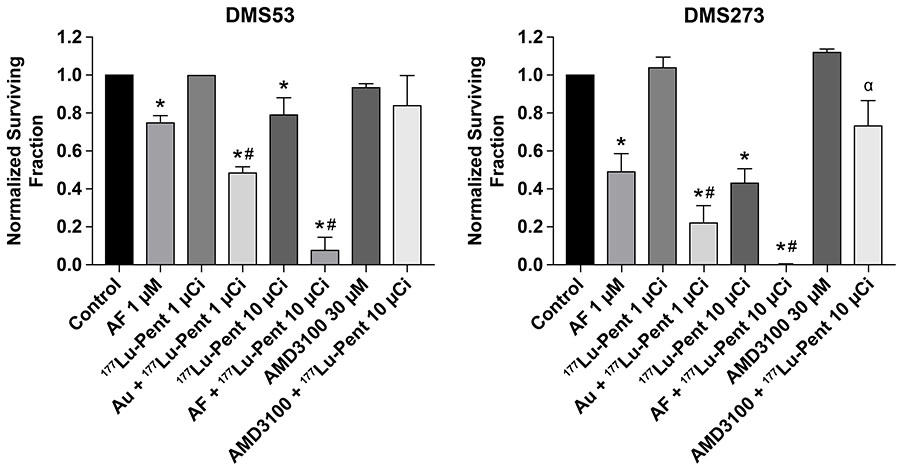Atypical carcinoids (AT) and neuroendocrine carcinomas (NEC) of lung are currently incurable with most patients dying of disease within five years after diagnosis. Although these pulmonary AT and NEC may initially respond to chemotherapy or to peptide receptor radiotherapy (PRRT) targeting somatostatin receptor type 2 (SSTR2), resistance to therapy results in metastases, progression, and ultimately death. There is thus a critical need for a new therapeutic strategy for AT and NEC. The majority of these lung tumors highly express the G protein coupled receptor, C-X-C chemokine receptor 4 (CXCR4), which makes it an attractive target for cancer diagnosis and treatment. The goal of Project 1 is to bring this new diagnostic and therapeutic option to the clinic.
Immunohistochemical Analysis of CXCR4 in human tumor cells
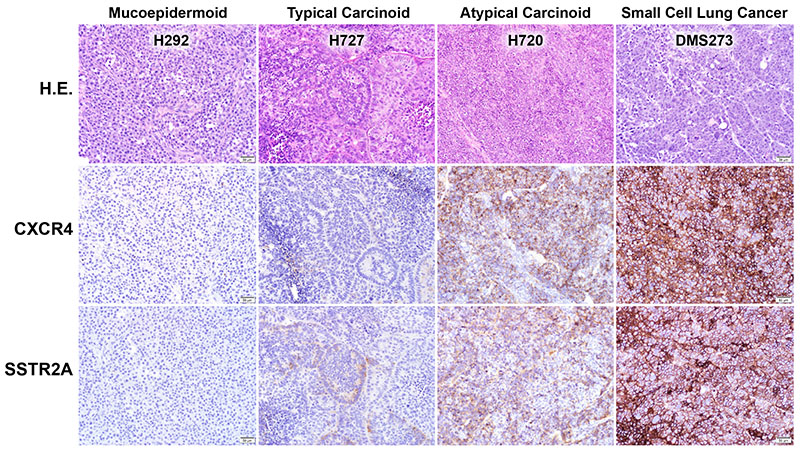
Expression of CXCR4 (cytokine receptor) and SSTR2A (somatostatin receptor) in xenografts of human cell lines.
Left to right: H292, mucoepidermoid tumor, no expression of CXCR4 or SSTR2; H727, typical carcinoid, small focus of mild CXCR4, moderate SSTR2 expression; H720, moderate CXCR4 and SSTR2 expression; DMS273, very strong CXCR4 and SSTR2 expression.
PET Imaging of CXCR4 in Tumors: 68Ga-Pentixafor PET/CT of Small Cell Lung Cancer Tumor in Mouse with uptake in kidneys and bladder.
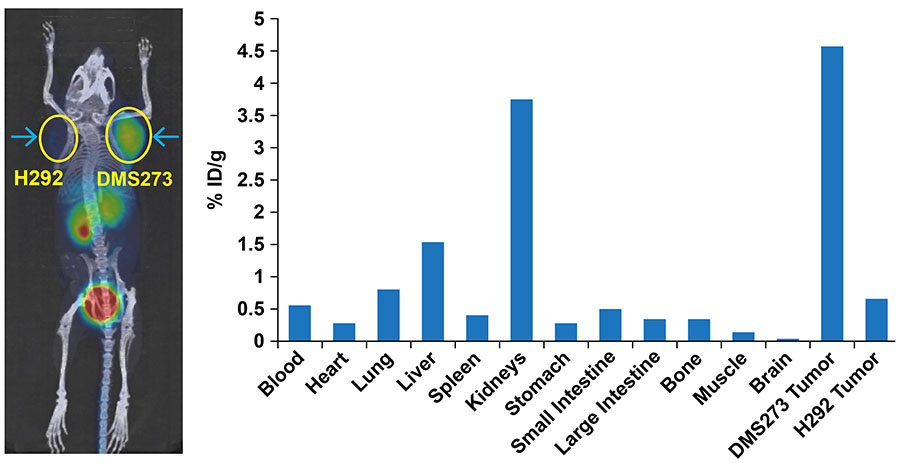
Mucoepidermoid H292 and Small Cell Lung Cancer DMS273 Tumors Imaged with 68Ga-Pentixafor PET/CT and uptake in normal organs and tumors quantified by biodistribution. H292 which does not express CXCR4, has no uptake of 68Ga-Pentixafor while DMS273, with high CXCR4 expression, has strong uptake of 68Ga-Pentixafor

Can 177Lu-Pentixather and Auranofin be combined to increase tumor cell killing?
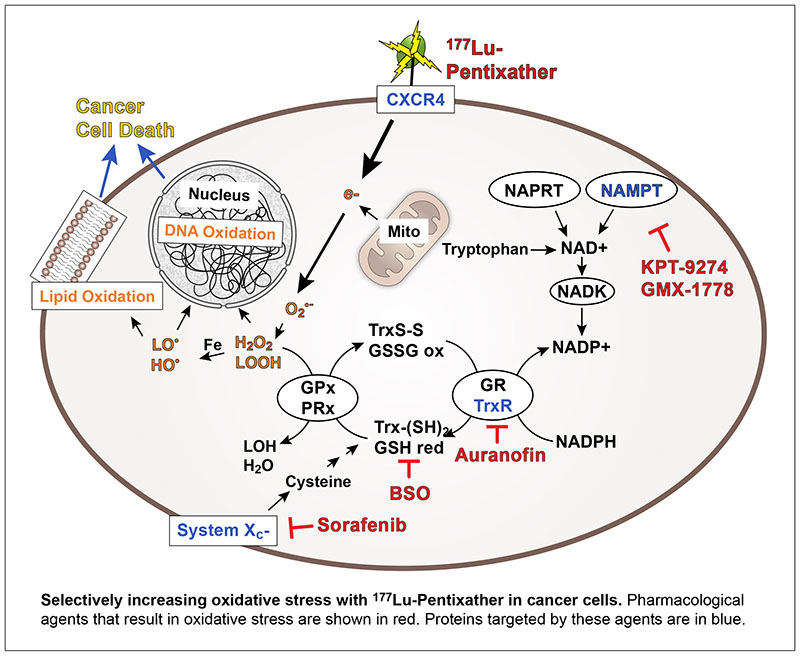
177Lu-Pentixather prolongs survival of mice bearing Small Cell Lung Cancer Xenografts with no change in bone marrow cellularity
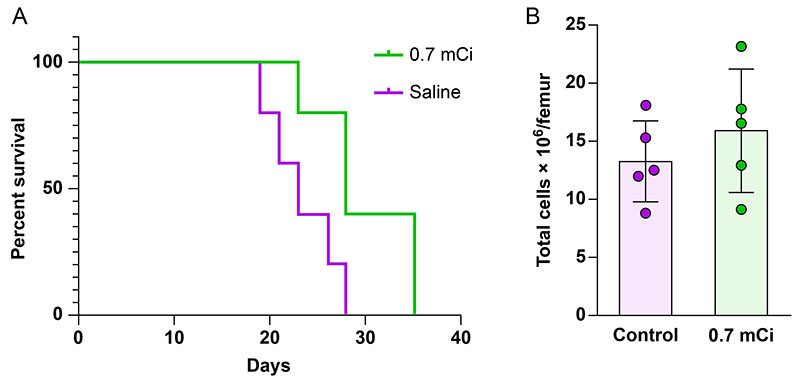
One million Small Cell Lung Cancer Cells were injected subcutaneously in flanks of nude mice and allowed to grow for ten days. Normal saline or 0.7 mCi 177Lu-Pentixather was then injected via tail vein and mice were euthanized when tumors reached ≥1cm3. A. Prolongation of survival with 177Lu-Pentixather; B. Bone marrow cellularity was not affected by 177Lu-Pentixather.
In vitro combination therapy of 177Lu-Pentixather and Auranofin
